How do historic homes become abandoned?
When circumstances unexpectedly changed last month, my husband Bruce and I had no choice but to leave our beloved home in the delightful historic East Hills neighborhood of Grand Rapids MI. Rather than face the drudgery of finding a new home right away, we put our belongings in storage (once again) and hit the road. We headed south for warmer weather, only barely escaping the frigid cold of Michigan that was beginning to creep in.
On our road trips we always make it our mission to take off-the-main-road excursions from time to time and we are never disappointed. Driving down Michigan and then into Ohio, besides enjoying the lovely countryside and the beauty of summer turning into fall, I could not help but notice the ever-growing number of overgrown abandoned old farmhouses along the way. After all those years of service, this was their reward? Surely these old beauties deserve better than this.
I started wondering what lay behind the abandonment of such homes. I hadn’t really thought about it before. Just as I was pondering on this conundrum, I spotted this dilapidated century old Victorian farmhouse and I pulled over to take a closer look. Perhaps I would find some clues in its crumbling structure.
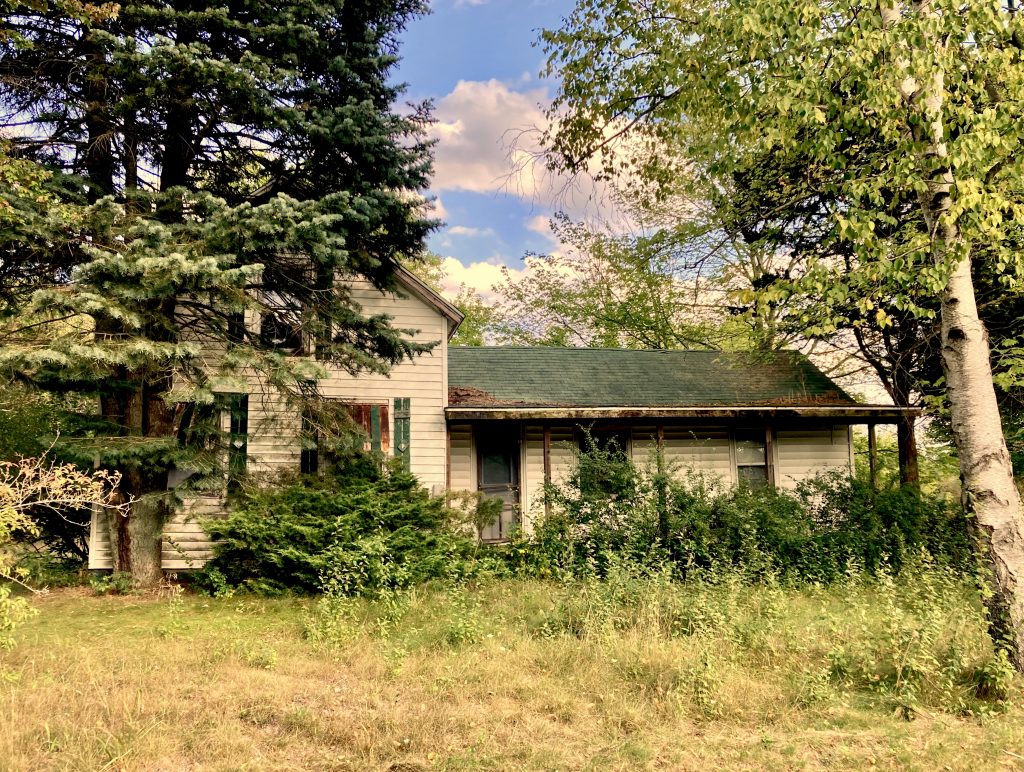
One thing was really clear to me. This house was once a well loved and cared for home. Evidence of that was in the white and forest green striped window canopies, now rusted and decayed, and what was left of the green shutters with their beveled edges and diamond shaped design inserts. The owners carefully selected a matching green tile roof as well. I wondered how many children had climbed that big pine tree in front of the gabled section of the house.
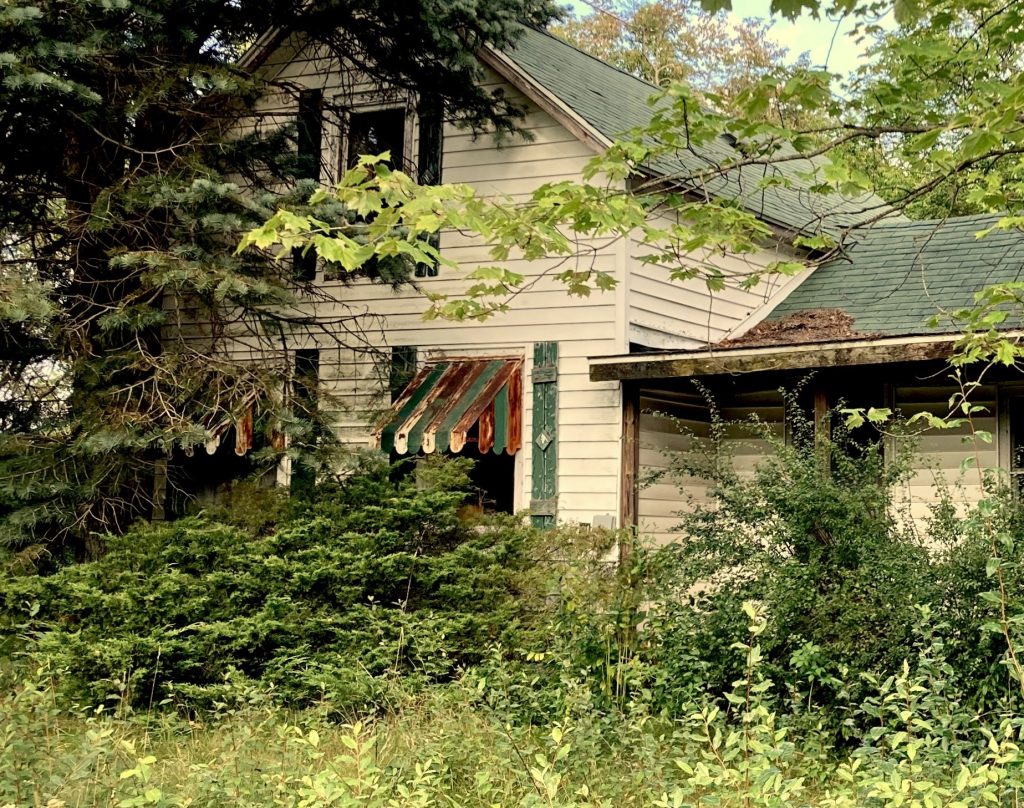
I inspected the porch and the screen door that was still somehow managing to stay connected to the door frame and wondered how many people had sat on that front porch and enjoyed the peaceful pastoral setting before them.
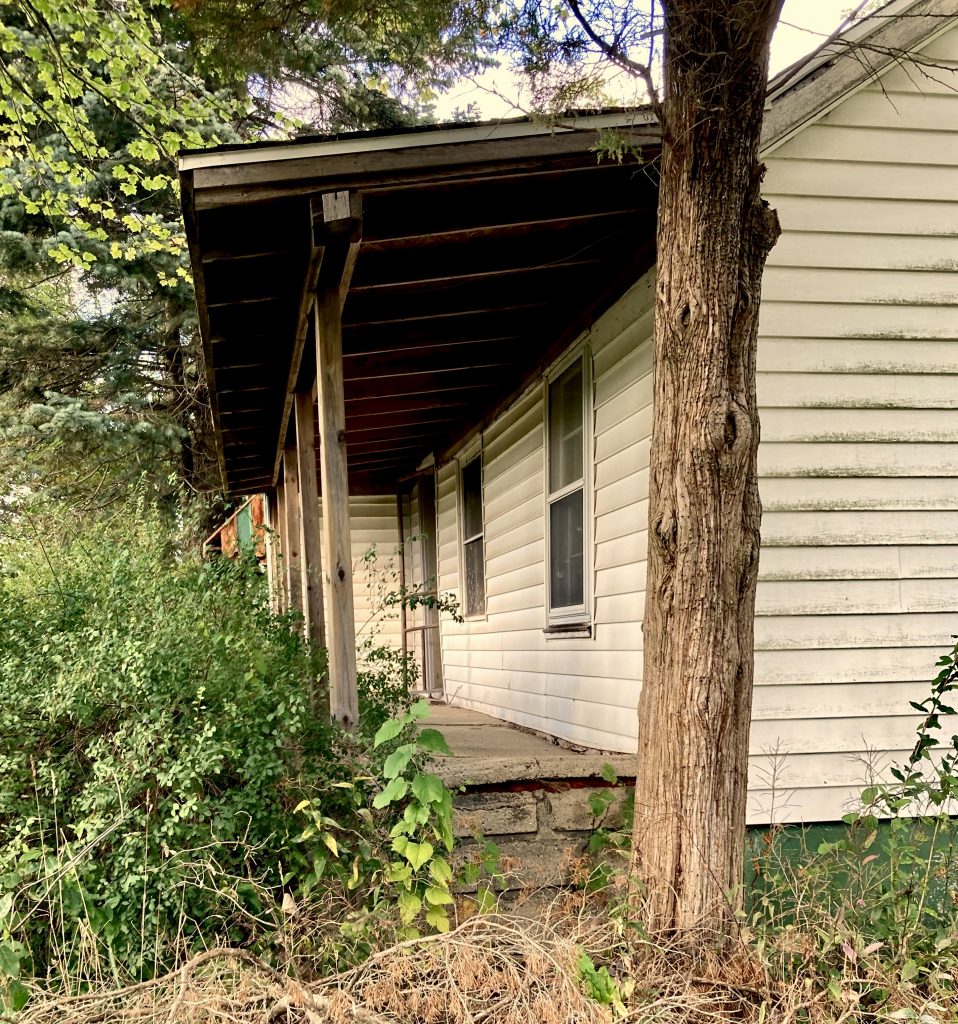
I wandered down the overgrown driveway and past the mailbox, now empty and forlorn. I thought about all the letters that had arrived in that mailbox over the years. There was an empty garage and a crumbling farm shed behind the house, along side a gurgling creek.
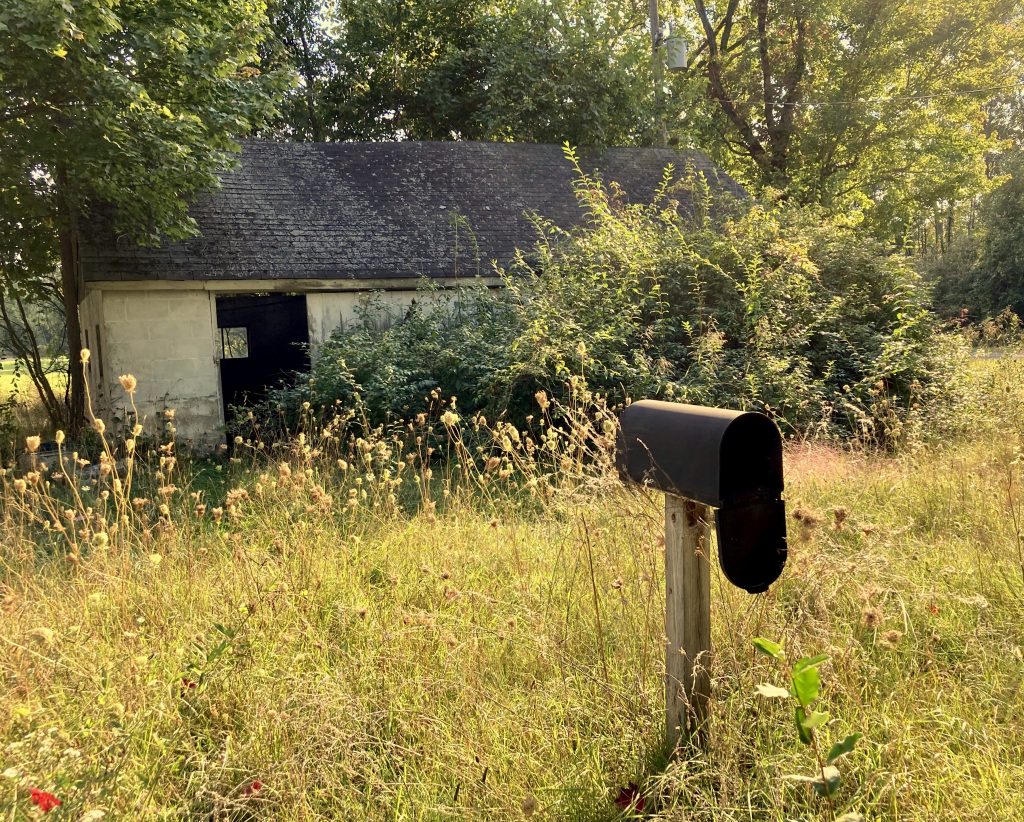

The back of the house painted a similar picture to the front. I felt convinced that this home was a special place for its last owners. I noted frilly lacy curtains still hanging from the kitchen window. I was tempted to enter through the back door that was ajar, but decided it was best to respect the privacy of the old home and the secrets it holds. I peered in however and saw a dining room table and chairs. There was still furniture and rugs and a stand-up lamp in the living room. So what made the owners leave so suddenly?
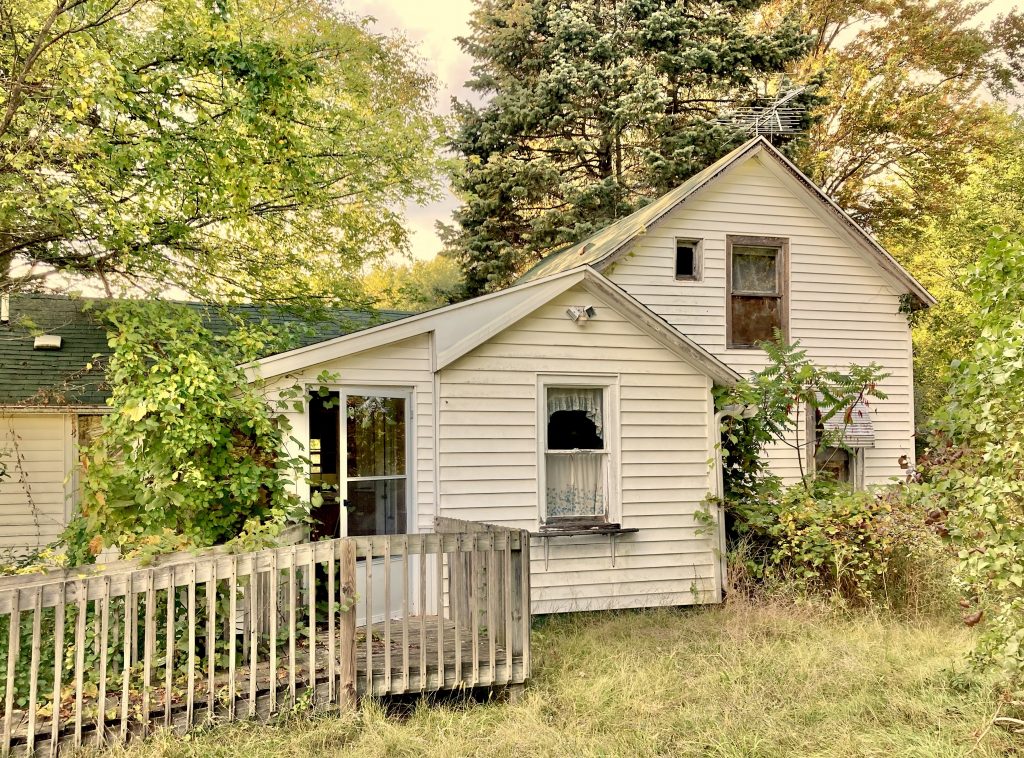
Unfortunately my Victorian farmhouse look about did not provide any real answers. Instead, it posed more questions and the mystery about the once well-kept and well-loved home only deepened for me. My guess was that the final owners were an elderly couple, without family or friends close by. When one of the pair passed away, heartbroken and lonely, the other died soon after. Maybe in that very house. Perhaps the mailman, discovering the mail piling up in the letter box–but with the familiar car in the driveway–stopped and knocked on the door and then discovered the inevitable. . . . In his hasty retreat he left the mailbox open.
Well enough of my imaginings. Instead I put my energy into doing some research and I found out the main factors that cause homeowners to take flight, often leaving their beloved homes to fend for themselves. Here are nine points that I distilled from my review.
Overwhelming cost of Repair and Renovation: The cost of renovation or replacement of a building is not cost-effective and the price for bringing a house back to life is prohibitive. A home, for example, may need foundation repair, a new roof, re-plumbing or electrical rewiring.
Reluctance to Sell: At times families cannot face selling their family home following the passing of their parents. The house instead remains uninhabited and gradually decays with time. In other cases, individuals die, sometimes suddenly, and there are no specifications as to who should be responsible for the home, and so it is left ownerless.
Housing Recessions: When such recessions occur, such as in 2008, housing prices fall steeply with supply far outweighing demand. Unable to afford their payments, homeowners are unable to sell their homes. The only solution for many homeowners was to walk away from their homes before they faced foreclosure.
Economic Crashes: If a particular industry is supporting an area and that industry collapses, people may have to relocate quickly to find other work. Some may abandon their homes in the process.
Demise of the Surrounding Neighborhood: Landlords stop investing in their properties once an area becomes depressed, as they know they will not recoup their investment in rent payments. Additionally, who wants to live in a neighborhood without the needed basic amenities. When a community is dead and dying, retail businesses will not move in which creates a vicious cycle. Furthermore, declines occur in commerce, tourism, and curb appeal once property values crash.
Natural Disasters: Often earthquakes, flooding, tornados, hurricanes, or other natural disasters force families to evacuate the area in which they live. Sometimes when individuals leave for safety reasons, they never return.
Ecological Disasters: Air pollution, water contamination or other issues can force people to leave their homes and properties and never come back. Sometimes ongoing water or air pollution troubles in the city make it challenging, if not impossible, to sell a house.
Violence in Neighborhoods: In some America cities and neighborhoods street violence has become so rampant that families – especially those with young children — simply abandon their properties because of their desire to escape from the danger.
Sustainability and Environmental Issues: Environment regulations by government agencies sometimes require homeowners to get rid of their septic tanks, lead-infused paint or old wiring. The asbestos factor can also be a problem. The cost of refurbishing such pieces of real estate can be more expensive than it would be to build another house.
So there you have it. I certainly learned a lot in writing this and I hope it was useful to you.
Until next time. . .
Cheers, Leisa


